Grow calendula from seed and welcome one of nature’s most joyful healers into your garden. Not only are these blooms effortless to grow, but they yield abundant flowers used to make powerful medicine that herbalists have relied on for centuries. From brightening salads with edible petals to crafting healing salves and soothing teas, having your own supply of this beneficial plant opens up endless possibilities for kitchen and medicine cabinet alike.
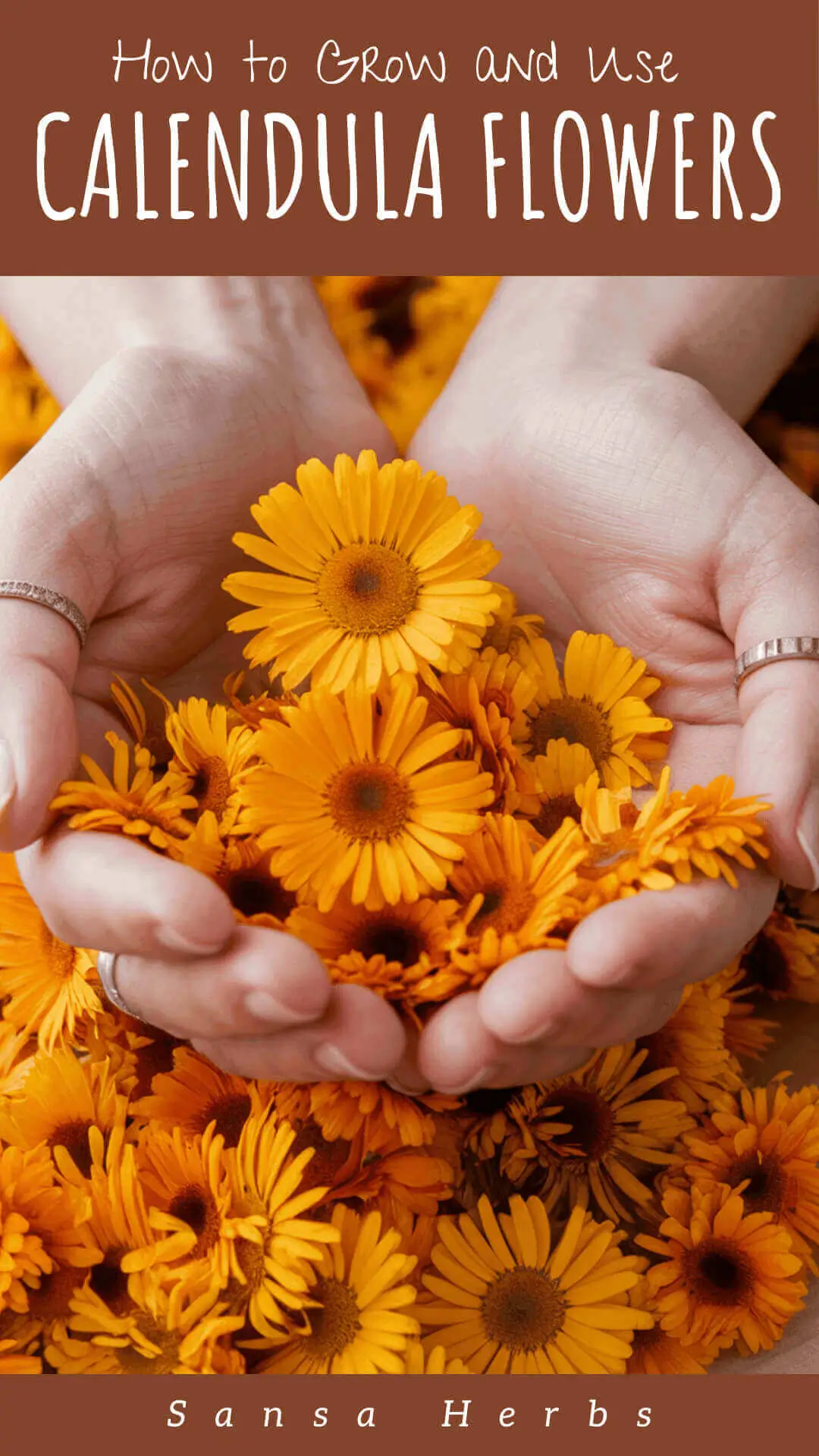
About Calendula Officinalis
Calendula (Calendula officinalis L.), also known as pot marigold, is a flowering plant in the daisy family (Asteraceae). Despite its common name, it is not related to true marigolds of the genus Tagetes.
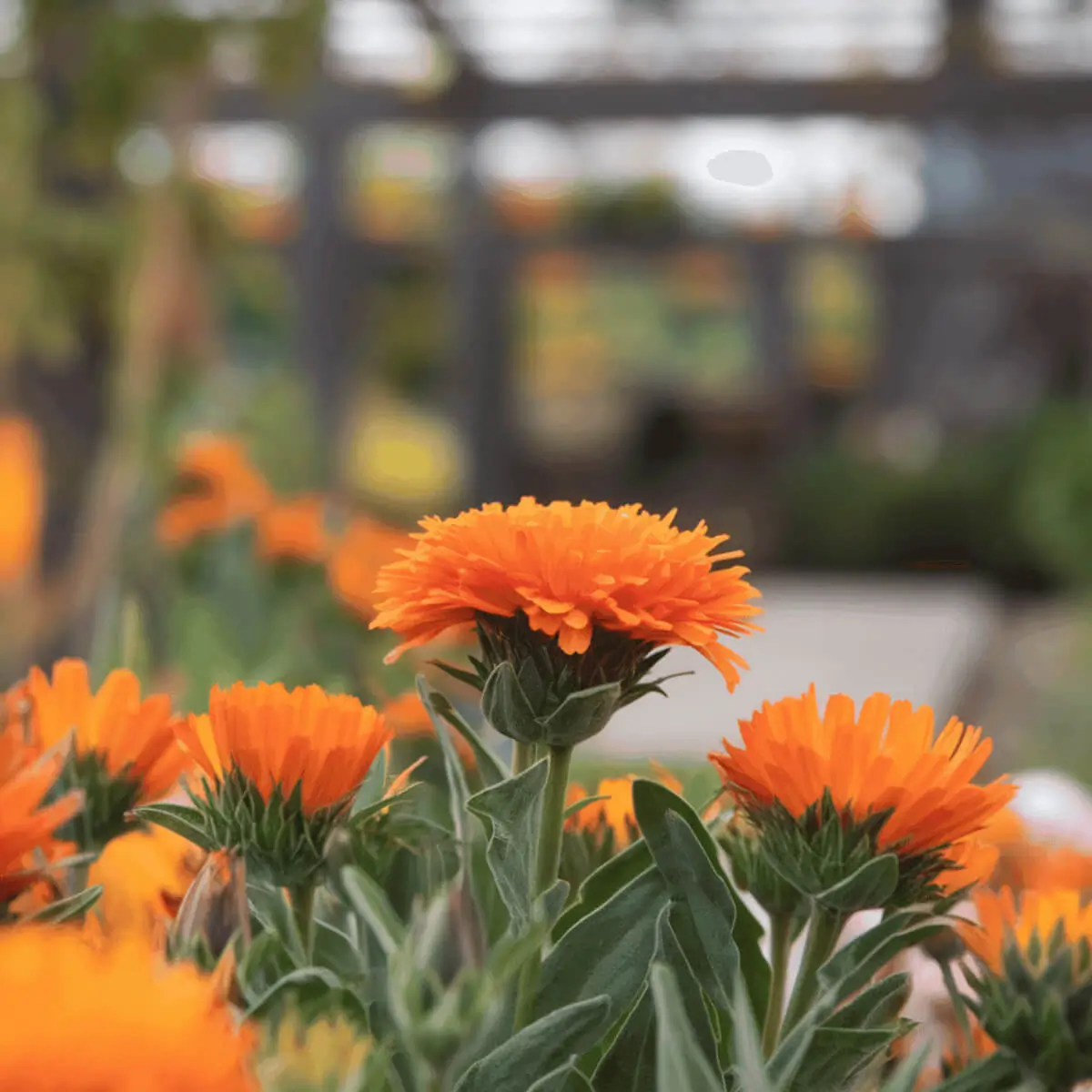
Grow calendula plants as hardy annuals in zones 2-10. While they readily self-seed in favorable conditions, in colder regions they are typically grown as single-season flowers and replanted each spring.
Calendula plants grow in a compact, bushy form, reaching 18-24 inches in height and 12 inches in width. This makes them perfect for:
- Edging pathways
Their manageable size and vibrant blooms make calendula a versatile addition to any garden! - Garden beds
- Containers
Calendula flowers are daisy-like with rows of overlapping petals in vibrant orange to yellow hues. Each 2–3-inch bloom features dense layers of petals around a central disk, and these cheerful flowers are highly attractive to pollinators, especially bees and butterflies.
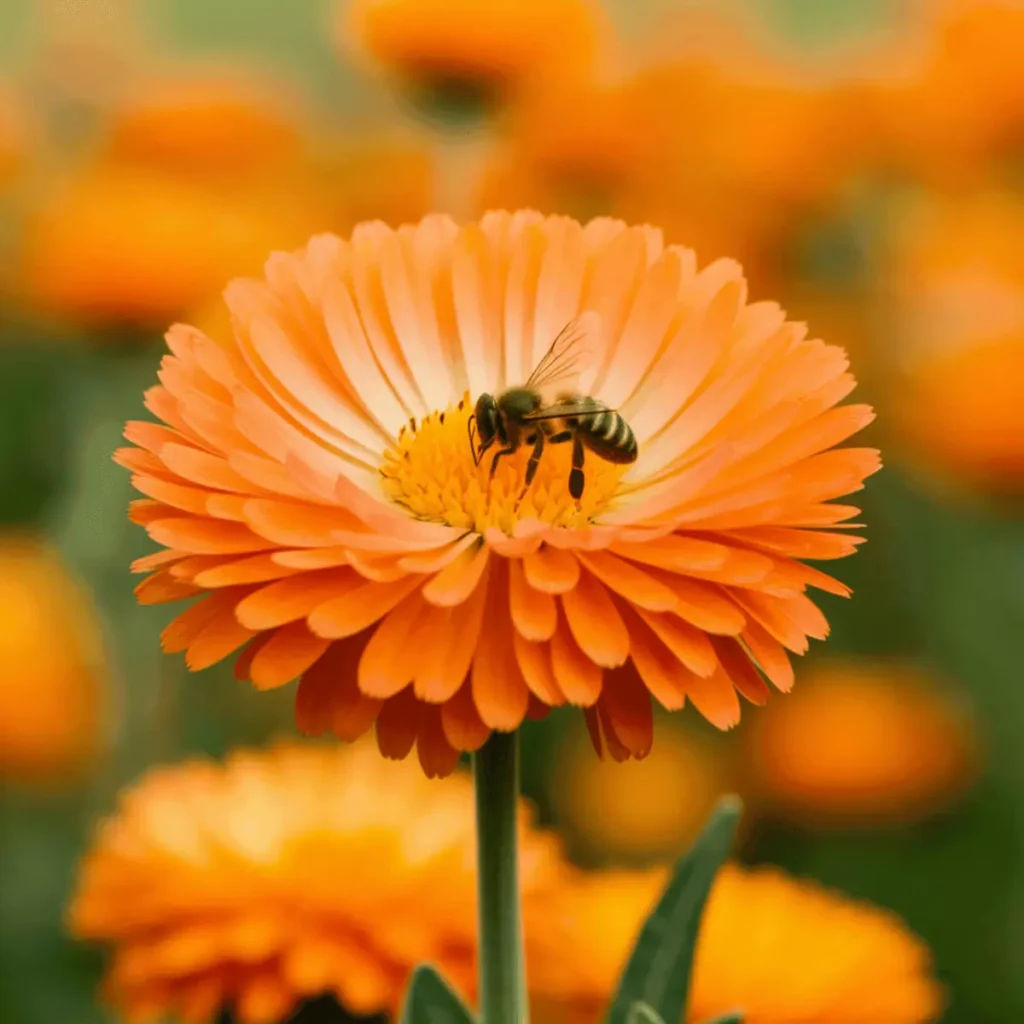
Calendula flowers are edible with mild, peppery petals that can be used fresh in salads or dried for teas. The vibrant petals are often used to add natural color to dishes and have traditionally been used as a saffron substitute in cooking.
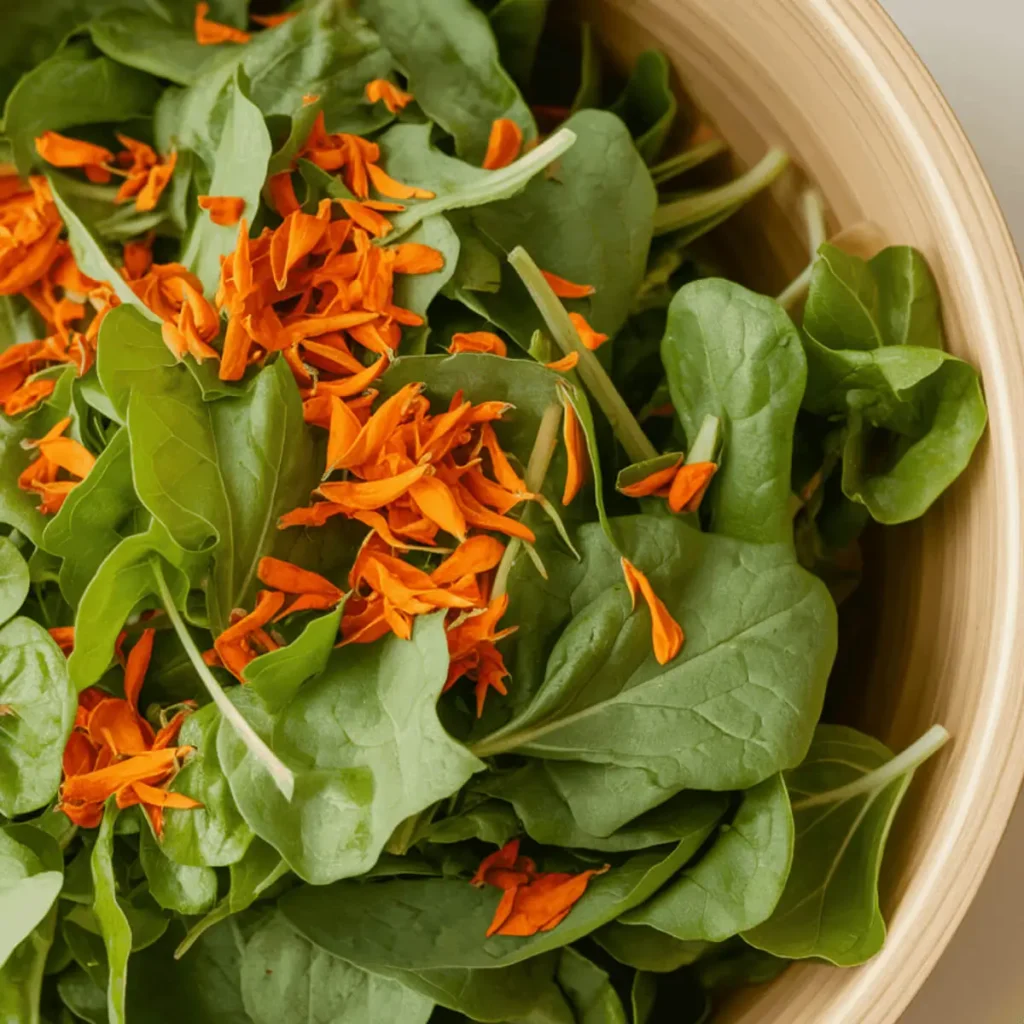
Calendula offers dual benefits in the garden – their abundant blooms provide cheerful color, and when planted alongside vegetables, they help deter common garden pests like tomato hornworms and asparagus beetles.
Calendula Officinalis Flower Cultivars
There are numerous cultivars of calendula, with some notable ones including:
- Pacific Beauty is a popular variety prized for both gardens and medicine. It features large, densely petaled blooms in yellow and orange shades, and its flowers are particularly rich in anti-inflammatory compounds.
- Pink Surprise produces soft peachy-pink flowers with creamy tips and a delicate fragrance. It’s a favorite among chefs for its edible petals and gentle peppery flavor.
- Touch of Red stands out with its distinctive red-backed petals and sturdy stems. Its high resin content makes it excellent for healing salves and skin care products.
- Radio displays unusual, quilled petals that create an eye-catching ruffled appearance. This variety is known for producing potent medicinal oils and long-lasting dried flowers.
What Do Calendula Seeds Look Like
Calendula flower seed are quite the curiosity. They are curved, rough-textured, and about 1/2 inch long. They have a distinctive C-shape, making them easy to identify when you’re ready to start planting or harvest calendula seeds from your mature plants.
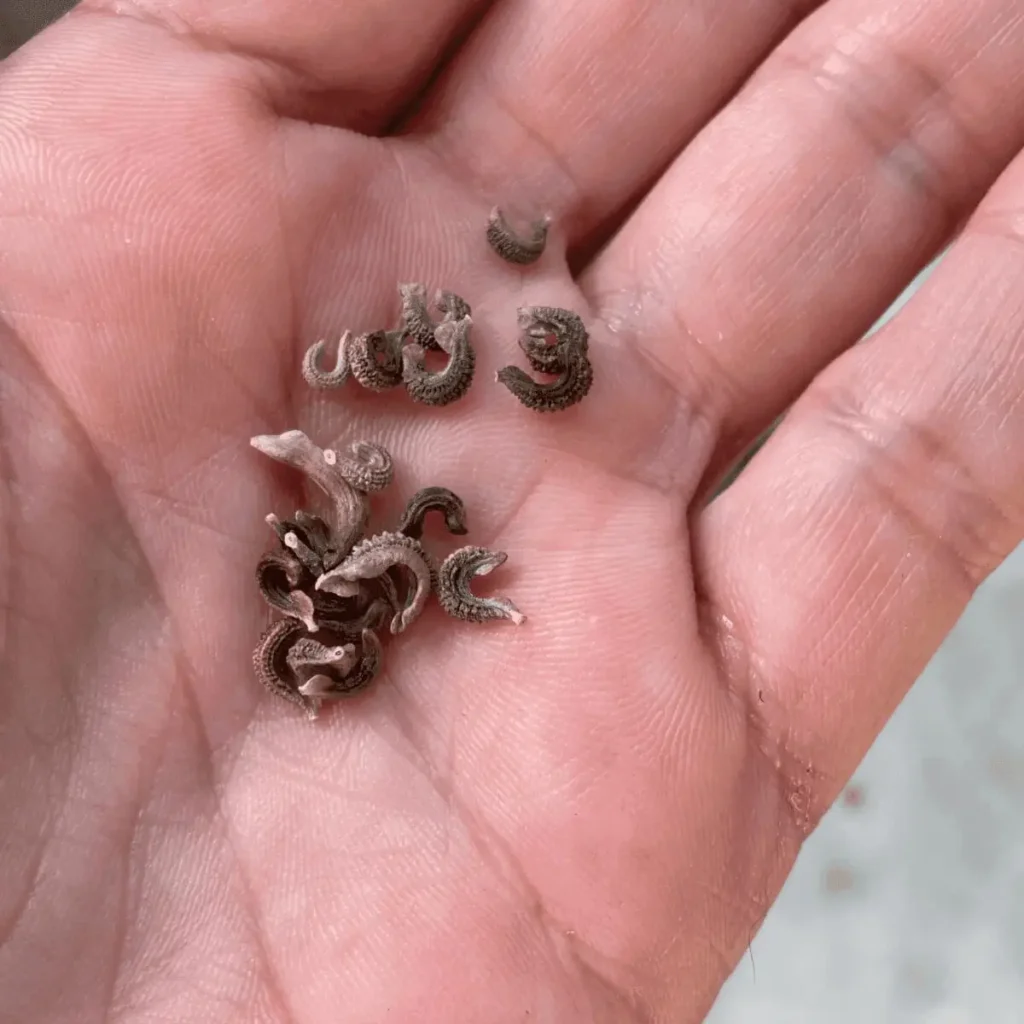
How to Grow Calendula from seed
To grow calendula, start seeds directly in the garden as they’re quite easy to germinate and don’t require indoor starting. The seeds can be planted as early as two weeks before the last frost date, as calendula seedlings are surprisingly frost tolerant.
Seeds can be obtained from mature seed pods shared by other gardeners or purchased from reputable online retailers. I ordered calendula seeds from a complete medicinal seed kit.
Calendula readily self-seeds, often producing volunteer plants that pop up in unexpected places throughout your garden the following spring. These volunteers can be easily transplanted while young, or you can leave them to create beautiful natural drifts of color.
While technically an annual, calendula can behave like a short-lived perennial in mild climates with proper deadheading. In zones 8-10, plants may bloom continuously nearly year-round, pausing only during the hottest months of summer.
Calendula grows quickly, taking just 45-60 days from seed to first bloom. Once established, they’ll flower continuously until frost, providing months of colorful blooms and medicinal flowers. It is a rewarding plant for any garden!
Calendula plants prefer well-draining soil but are adaptable to most conditions. Regular watering and deadheading spent blooms will keep them flowering abundantly.
In mild winters, calendula continues blooming. In cold regions, they die back after frost but will often self-seed for next year’s garden.
Calendula Seed Saving
How to save calendula seeds: wait until the flower heads are completely dry and brown, then collect the curved seeds from the center of the flower.
Harvesting Calendula Flowers
To harvest calendula flowers, pick the freshly opened blooms on a sunny morning when they’re dry, snipping the stem just below the calyx leaving a bit of stem attached.
After harvesting calendula blooms, they will continue producing. The more you pick, the more they grow.
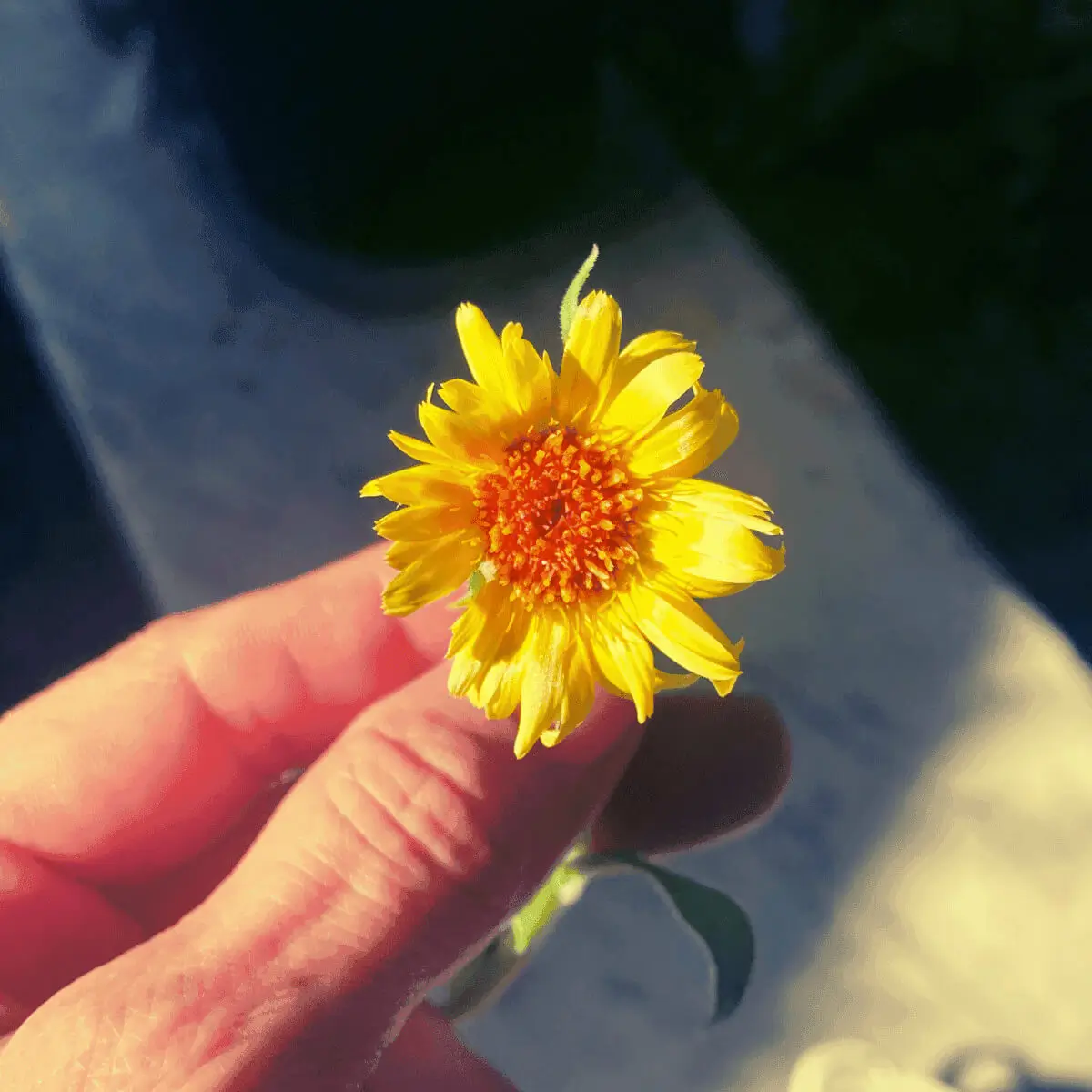
A healthy calendula plant will product dozens of blooms throughout the growing season, with a single plant producing 100-200 flowers over several months if regularly harvested.
While most flowers are harvested at peak bloom, it’s wonderful to let some go to seed – not only for their continued beauty in the garden, but also because they will self-seed readily, ensuring next season’s plants. The pollinators, especially bees and butterflies, will thank you too!
- You may enjoy: How to Make Calendula Oil: A Simple Guide for Skin, Hair & Healing (And Why You’ll Want to Grow Your Own!)
Medicinal Uses and Benefits of Calendula
Calendula flowers can be used fresh or dried to create healing teas, tinctures, salves, and oils. Their anti-inflammatory and wound-healing properties make them excellent for treating skin conditions, minor cuts, and burns. You can infuse the petals in oil to make soothing calendula oil, which serves as a base for many natural skincare products and homemade remedies.
Add some dried flowers to hot water and make a tea. Calendula is known to support healthy lymphatic system and help reduce swelling in the body.
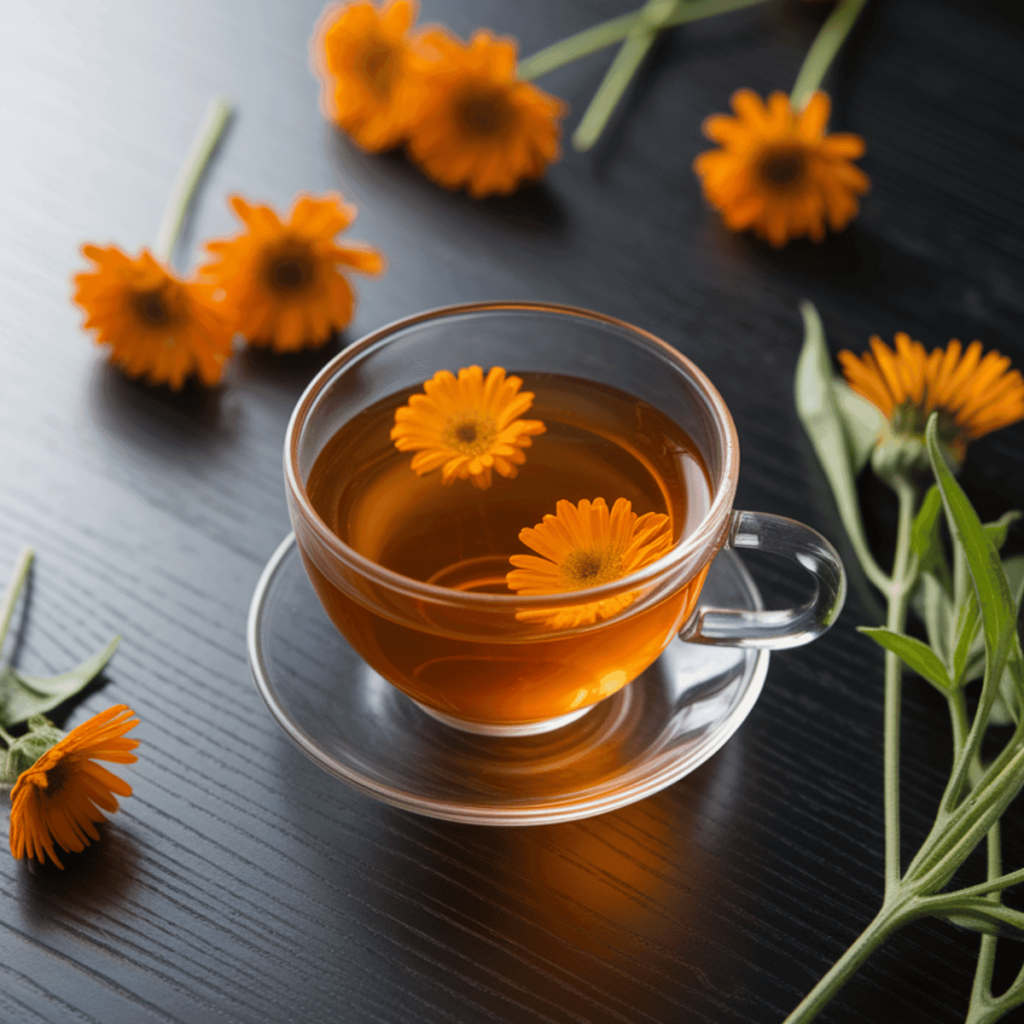
I hope this guide has inspired you learn more about growing and using calendula. It’s a wonderful medicinal herb that’s easy to grow in your garden and has so many beneficial uses.
Once your calendula is blooming, learn how to turn it into a healing balm with our 3-step calendula salve recipe.
You can get premium calendula seeds here, or a complete medicinal garden seed kit here. Happy gardening and healing!
Quick Reference: Growing Calendula from Seed
| Basic Growing Information | Growing Conditions |
|---|---|
| Difficulty Level Easy | Light Requirements Full sun to partial shade |
| Time to Germination 5-10 days | Soil Type Well-draining, tolerates poor soil |
| Time to Maturity 45-60 days | Soil pH 6.0-7.0 |
| Plant Height 12-24 inches | Temperature Range 50-75°F (10-24°C) |
| Spacing 8-12 inches apart | Water Needs Moderate, drought tolerant once established |
| USDA Zones 2-11 |
Growing Locations
Container Growing: ✓ Excellent
Indoor Growing: ✓ Possible
Outdoor Growing: ✓ Ideal
Historical & Traditional Significance
Astrological Association: Sun (according to Culpeper)
Traditional Uses:
Skin healing, Anti-inflammatory, Wound care, Immune support